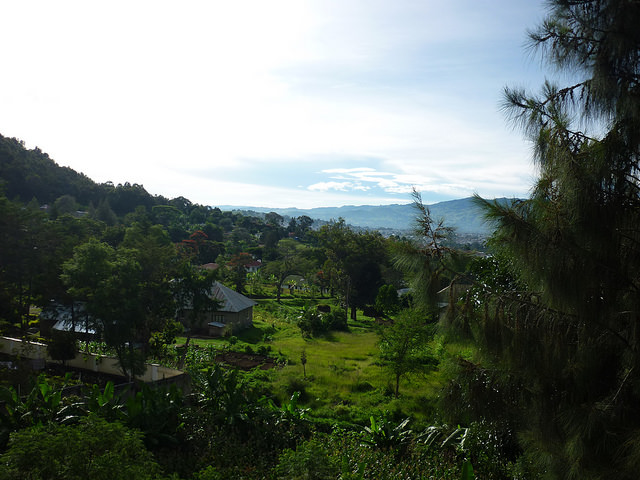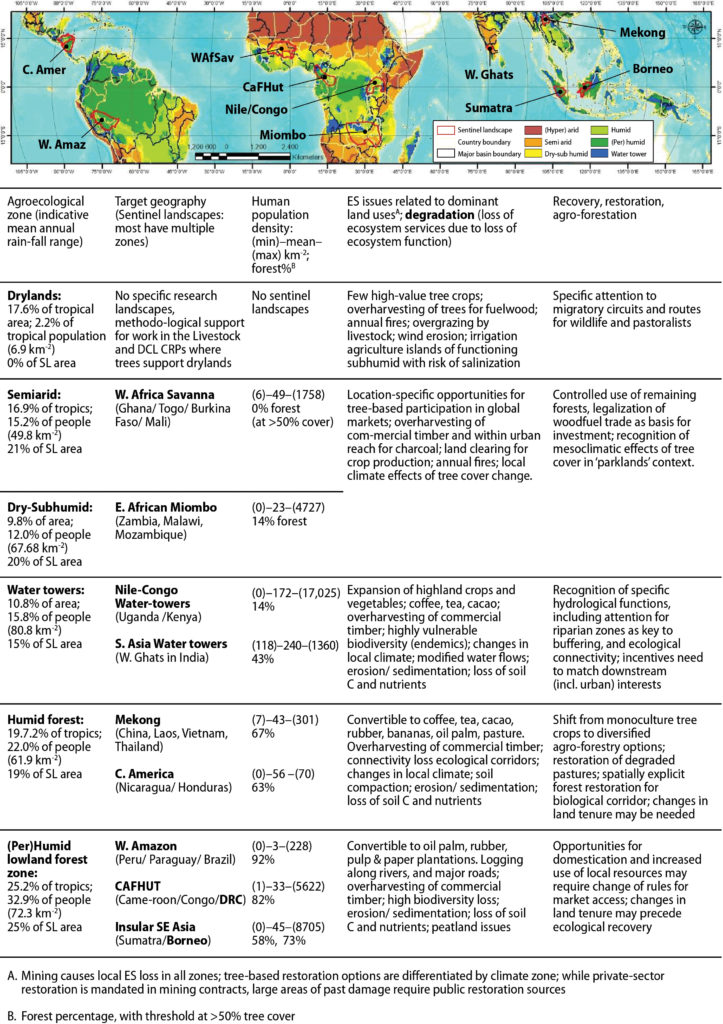
The interdisciplinary science of landscapes is still relatively young. Landscapes and their ecosystems provide goods, regulatory, cultural and supportive ecosystem services essential to sustain the livelihoods of their inhabitants.
Most tropical landscapes today have sub-optimal design and management resulting in a big gap between the potential and actual multifunctional output of the landscapes.
It is possible to significantly improve the design and management of the landscapes to close the multi-functionality gap, i.e the use of land for production of tradable or locally consumed goods is traded off against the environmental integrity of water, nutrient and carbon cycles and biodiversity conservation.
This research targets a deeper understanding of ongoing changes in forest or tree cover. How has the forest cover changed over time and space? What are drivers globally and are they the same everywhere? How can trade-offs be managed between landscapes having to provide ecosystem services while pressure mounts to extract resources and achieve economic growth and sustain livelihoods?

An adaptive management of landscapes can be effectively supported by:
- Estimating current stocks, observing of actual change and understanding drivers of change;
- Estimating the consequences of tree cover change and interpreting of functions, ecosystem services and trade-offs more inclusively;
- Searching for innovative technical and institutional (governance) solutions;
- Comprehensively analyzing scenarios of proposed solutions in the context of external trends and expected global change;
- Involving stakeholders early on who can shape political platforms of change in polycentric governance systems, with the aim to reach the Sustainable Development Goals (SDGs).
Our main research questions are:
- What are the current patterns and intensities of change in tree cover?
- What are the consequences of such changes for ecosystem function and services?
- How does landscape diversity contribute to human well-being and healthy diets?
- How can efficient and fair landscape governance emerge that influences the generic drivers and/or community and household level incentives to improve multi-functionality?
To answer these questions in their local context, we have selected a network of landscapes to represent vast agroecological zones (see Figure 1) for our four groups of activities.
- Landscape observatories: Forests, trees, farm and settlement dynamics
Key research questions:
- Who are the actors and stakeholders of the landscape, in a historical-political perspective on (claimed) rights, an economic perspective on livelihoods and value chains and a cultural-social perspective on identity and aspirations?
- What land use systems are present where in the landscape and what are current patterns and intensities of change (tree cover, objectively observable aspects of forests, farms, other land uses) in space and time?
- Can observed changes be understood (why) on the basis of drivers that operate at larger scales, demography and economic policies?
- Landscape mosaics, biodiversity and ecosystem services
Key research questions:
- What are the consequences of changes (so what’ and who cares) in quality, quantity and spatio-temporal configuration of forest and tree cover in landscapes for ecosystem functions that underpin the provision of usable goods and other ecosystem services?
- How are perceptions and preferences of ecosystem functions differentiated by gender, ambitions of young people and intergenerational aspects?
- How can stakeholders of the consequences of landscape change achieve leverage on the drivers of change, through a combination of rights-based approaches , economic instruments and motivational factors?
- How can existing ‘green economy’ planning tools for land use for multiple ecosystem services be improved, adapted and adopted more widely?
- Healthy diets from diverse landscapes
Key research question:
- How does landscape multi-functionality contribute to human well-being and healthy and diverse diets through the (local) availability of and access to improved tree food sources as well as wild foods (i.e. provisioning services part of the wider ecosystem services concept)?
- Adaptive landscape institutions
Key research questions:
- How can local and external stakeholders concerned about consequences of ‘business as usual’ trajectories affect the generic drivers and/or community and household level incentives and rights to nudge land-use decisions into a more desirable direction?
- How can ecosystem services be restored most effectively within landscapes in terms of both defining the desired changes (restoration to forest or agroforest, use of ecosystem services-friendly agroforestry practices) and types of intervention (regulation, incentives, markets for ecosystem services)?
